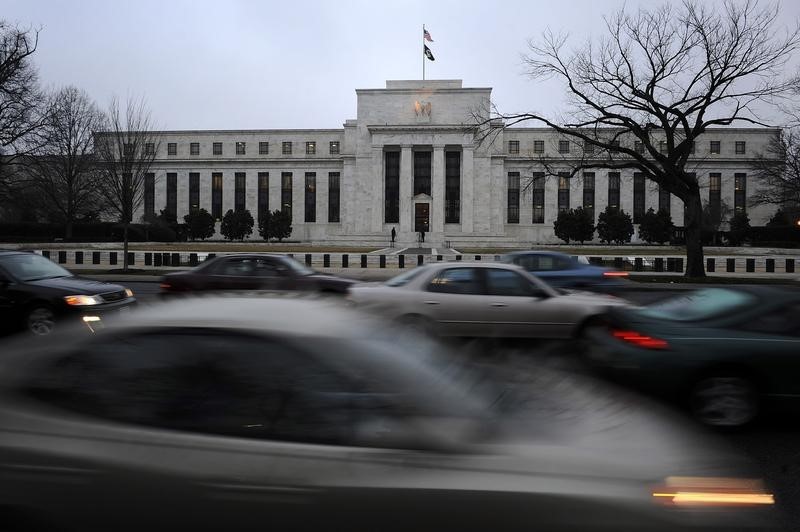(Bloomberg) -- Federal Reserve policy makers have concluded that when in doubt, do no harm.
Welcome to the new abnormal.
Six months ago, U.S. central bankers thought they’d soon be returning to the days of on-target inflation, full employment and interest rates that, while lower than in decades past, would still need to rise into growth-restricting territory to keep things on track.
But in a watershed moment, the Federal Reserve surprised investors Wednesday by slashing rate projections to show no hike this year. Officials signaled expectations for a slowdown in the economy, which would translate into higher unemployment than previously forecast, and they no longer expect inflation to rise above their 2 percent target.
The move was a serious about-face. Since September 2017, they had signaled they would probably need to eventually raise rates above their estimate of the so-called neutral level for the economy -- which neither slows nor spurs growth -- to slow the expansion and protect against the possibility of higher inflation.
That was based on a longstanding view in the economics profession about how the economy works: If central bankers allow the unemployment rate to fall too far below its lowest sustainable level by keeping rates too low, then inflation will rise.
But in the U.S., though the unemployment rate has fallen to 3.8 percent, near the lowest levels in five decades, neither price gains nor inflation expectations have gone up. If anything, they’ve been sliding. And it appears to be a global problem. The apparent contradiction has policy makers rethinking things.
Here are five key developments that explain the Fed’s dilemma:
What’s Neutral?
Fed officials’ have been trying to get rates from just above zero -- where they’d held them from 2008 to 2015 -- to their estimate of the neutral rate.
When they began hiking in December 2015, they believed that number was around 3.5 percent. Now they think it’s more like 2.75 percent, which means they are getting close. But the new projections show policy makers think raising rates to that level over the next three years would be going too far, given recent signs of a deceleration in the pace of economic growth.
Don’t Look Down
Low rates globally mean central banks including the Fed have less firepower to counter an economic slowdown. The yield on 10-year Treasury securities, at 2.54 percent, is only about a tenth of a percentage point higher than the Fed’s overnight rate. Some economists view the Fed’s tightening cycle as now having peaked, and investors see more chance of a rate cut over the next year than a hike. That has Fed officials thinking harder about strategies to deploy alongside rate cuts when the next downturn hits.
Price Problems
Low inflation has been a thorn in the Fed’s side throughout this expansion, and it’s a big part of the reason that the central bank has cut back its rate-hiking plans for the cycle.
Fed officials say they target 2 percent inflation symmetrically -- meaning they’re equally unhappy about overshoots and undershoots -- but they’ve been on the low side since they formally adopted that target back in 2012. The Fed isn’t alone: from Japan to Europe, central banks are struggling to meet their inflation goals.
Despite that, the tepid progress has come as a surprise to U.S. policy makers, who believed America’s hot labor market would push price indexes higher, faster. Officials had expected inflation to climb to 2.1 percent in 2020 and 2021 -- until Wednesday. They no longer expect to overshoot their 2 percent goal at all, their newest economic projections show.
Useless Guide
The job market has consistently surprised the Fed. America’s unemployment rate has fallen to less than 4 percent from 10 percent in 2009. Despite the decline, employers have found plenty of workers to hire, generally keeping job gains strong, and inflation has responded only weakly.
Why? Employees have been staying in the labor market longer, and more recently, would-be workers have begun coming in from the sidelines. The share of adults who work or look for work, which had staged a long-running decline, has stabilized. The trends suggest that the jobless rate may be losing some of its oomph as a policy guide.
Against that backdrop, Fed officials have revised their estimates for the unemployment level they believe would be consistent with stable inflation in the long run down to 4.3 percent -- a big change from 2010, when they believed that number was above 5 percent. They see the jobless rate bottoming out at 3.7 percent this year, before creeping higher.
Big Balance Sheet
The Fed’s balance sheet exploded to $4.5 trillion from $1 trillion on the back of three rounds of post-crisis bond-buying. The policy committee has gradually shrunk it to just under $4 trillion by allowing bonds to mature without reinvesting the proceeds. Fed Chairman Jerome Powell and his colleagues announced this week that the rolling-off process will start to slow in May and will end in September.
Powell said the balance sheet will probably close out the process at the end of the year “a bit above” $3.5 trillion, a size the central bank might maintain for a while before beginning to gradually expand its holdings again to satisfy cash demand.
Suffice it to say, Fed officials are weighing a lot of big questions about bedrock economic concepts. Still, that story -- and the caution it calls for -- could change if growth beats expectations.
"Everyone is saying this a huge dovish pivot," said Neil Dutta, head of economics at Renaissance Macro Research. “I’m not so sure. It’s a forecast-dependent pivot.”
